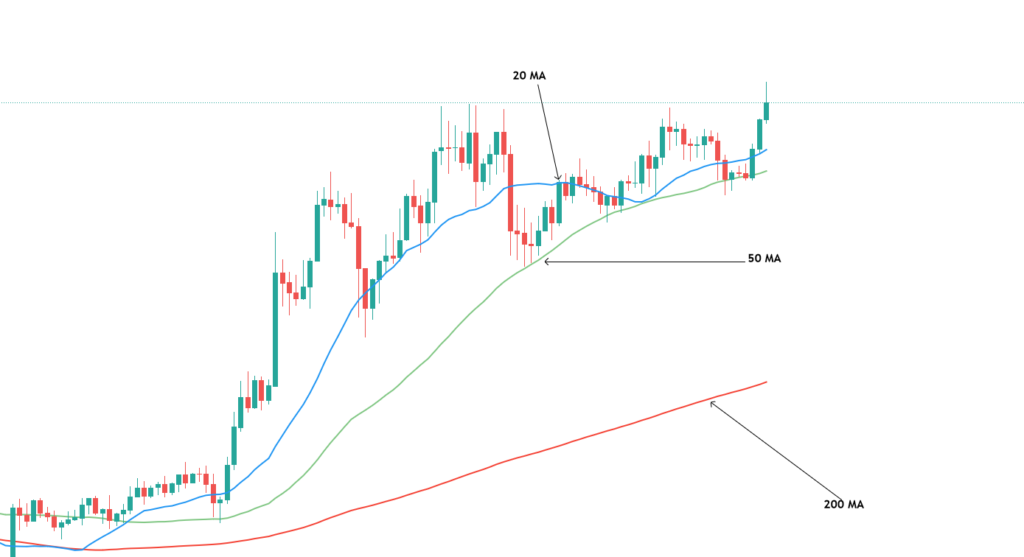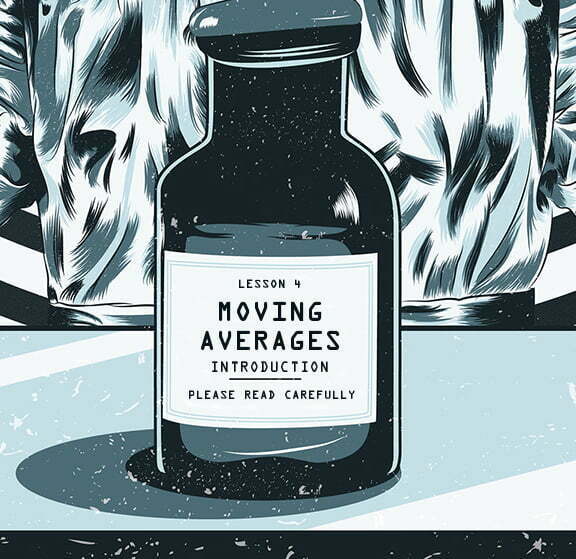When you look at a chart posted on Twitter, you might wonder what those additional lines apart from the price action even mean. They’re called indicators, and in this article, I’ll tell you about the most widely used indicators out there: moving averages or MAs.
There’s two kinds of moving averages: simple (SMA) and exponential (EMA). We’ll start, appropriately enough, with SMAs. Essentially, at each period (each day on a daily chart and each 4-hour candle on a 4H chart, for example), the moving average is a single value: the average of the closing price for the last N periods. N is the length of the moving average, and it changes how quickly the MA will respond to price changes (longer periods give an average of a longer period and change more slowly).
Then, when you’ve got an MA value for each period, these values are joined together to form a single line (hence moving averages). As for the periods used, this depends on the scale you’re looking at. The most common ones are 20, 50 and 200 period MAs, with longer MAs telling you about longer-term trends. Since price action can be very choppy on its own, MAs help smooth this out and give you a clearer indication of where the trend is going.
Here’s an example

EMAs are a bit different. Instead of just taking a simple average of the prices, an EMA additionally gives more weight to more recent prices, so that it reacts to changes in price direction more quickly than an SMA. Some common values are 9, 20, 50, 100 and 200, although this Is also dependent on personal preference and the specific pair you’re looking that.
No matter whether you’re using SMAs or EMAs, a good strategy is to check which values have performed best historically. If the price has often bounced off of the 21 period EMA on the 4H chart, for example, then this EMA length would be something to watch in the future as well.

When it comes to trading MAs, I’ll make a separate post about that, but the first thing to say here is that MAs often act as support and resistance levels (and they’re termed “dynamic support/resistance”). So, everything that we said about S/R levels — breakouts, retests etc. — also goes for MAs.






can I entirely depend on EMAs, buy every time 21 crosses 50 ?
Perfetto uncle BloodG.
Moin Blood,
danke für den Beitrag. N ist also einfach die Anzahl der Kerzen?
20 EMA auf dem 4H Chart repräsentiert demnach die letzten 20 Kerzen des Charts?